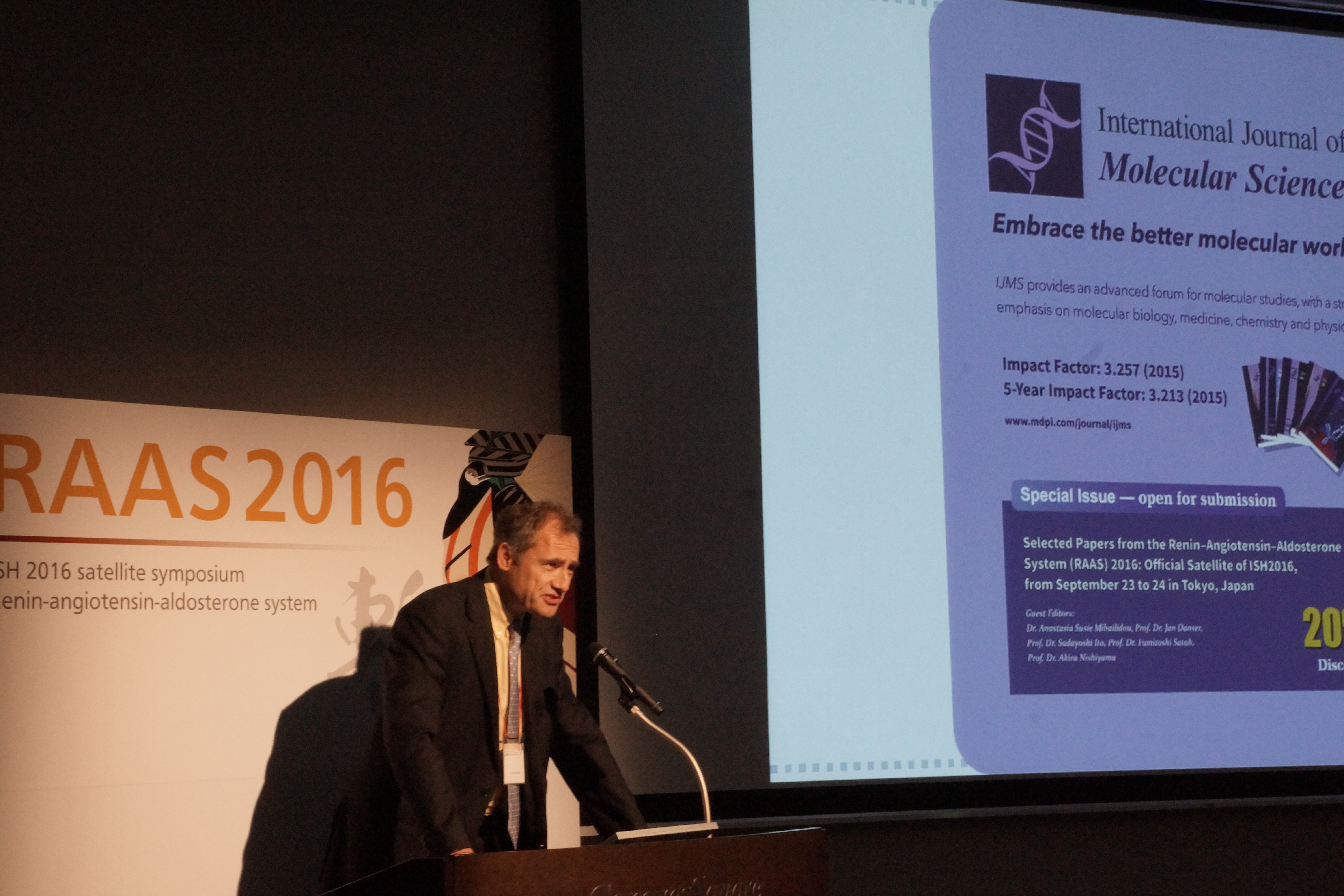- 4.9Impact Factor
- 9.0CiteScore
- 21 daysTime to First Decision
Selected Papers from the Renin–Angiotensin–Aldosterone System (RAAS)2016: Official Satellite of ISH2016, from September 23 to 24 in Tokyo, Japan
This special issue belongs to the section “Molecular Pathology, Diagnostics, and Therapeutics“.
Special Issue Information
Dear Colleagues,
Renin–angiotensin–aldosterone system (RAAS) blockers are the cornerstone of the treatment of cardiovascular disease and nephropathy. While there are currently four types of RAAS blockers (renin inhibitors, ACE inhibitors, AT1 receptor antagonists and mineralocorticoid receptor antagonists), there have been many exciting new developments as well as alternative RAAS targets identified. Recent investigations have revealed a range of unanticipated extrarenal actions of aldosterone, as well as detailed insight in the genetic causes of primary aldosteronism.
This Special Issue will present a selection of contributions from the two-day RAAS2016 Symposium (http://www.congre.co.jp/raas2016/) convened by Presidents Prof. Sadayoshi Ito (Sendai) and Prof. Jan Danser (Rotterdam) in Tokyo 23–24 September, 2016, immediately prior to the 26th Meeting of the International Society of Hypertension (ISH) which will be held in Seoul, Korea.
All speakers presenting a paper at this conference can submit a manuscript for publication. For further information contact the Editorial Office (ijms@mdpi.com).
Prof Sadayoshi Ito
Prof Jan Danser
Prof Akira Nishiyama
Prof Fumitoshi Satoh
Dr Anastasia S Mihailidou
Guest Editors




Manuscript Submission Information
Manuscripts should be submitted online at www.mdpi.com by registering and logging in to this website. Once you are registered, click here to go to the submission form. Manuscripts can be submitted until the deadline. All submissions that pass pre-check are peer-reviewed. Accepted papers will be published continuously in the journal (as soon as accepted) and will be listed together on the special issue website. Research articles, review articles as well as short communications are invited. For planned papers, a title and short abstract (about 250 words) can be sent to the Editorial Office for assessment.
Submitted manuscripts should not have been published previously, nor be under consideration for publication elsewhere (except conference proceedings papers). All manuscripts are thoroughly refereed through a single-blind peer-review process. A guide for authors and other relevant information for submission of manuscripts is available on the Instructions for Authors page. International Journal of Molecular Sciences is an international peer-reviewed open access semimonthly journal published by MDPI.
Please visit the Instructions for Authors page before submitting a manuscript. There is an Article Processing Charge (APC) for publication in this open access journal. For details about the APC please see here. Submitted papers should be well formatted and use good English. Authors may use MDPI's English editing service prior to publication or during author revisions.
Keywords
- Renin–angiotensin–aldosterone system inhibitors
- ACE2-angiotensin-(1-7)-Mas receptor
- Combined AT1 receptor/neprilysin inhibitors (ARNI)
- (Pro)renin receptor
- Primary aldosteronism
Benefits of Publishing in a Special Issue
- Ease of navigation: Grouping papers by topic helps scholars navigate broad scope journals more efficiently.
- Greater discoverability: Special Issues support the reach and impact of scientific research. Articles in Special Issues are more discoverable and cited more frequently.
- Expansion of research network: Special Issues facilitate connections among authors, fostering scientific collaborations.
- External promotion: Articles in Special Issues are often promoted through the journal's social media, increasing their visibility.
- e-Book format: Special Issues with more than 10 articles can be published as dedicated e-books, ensuring wide and rapid dissemination.

